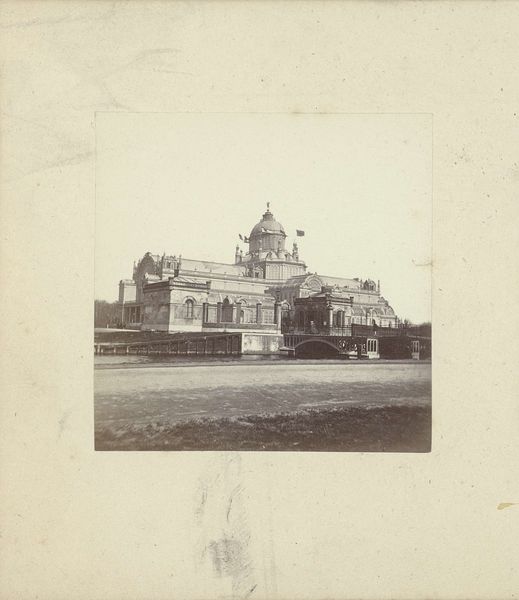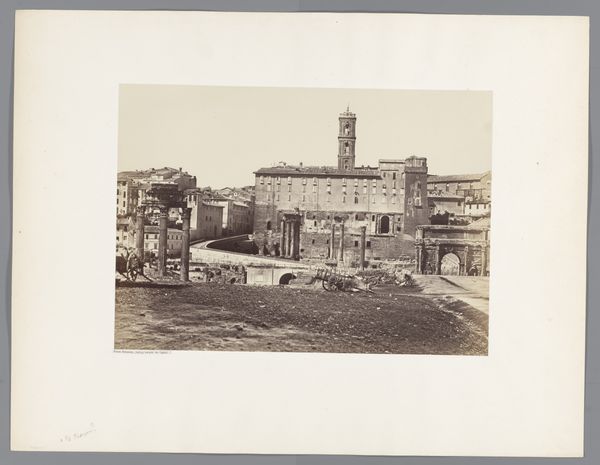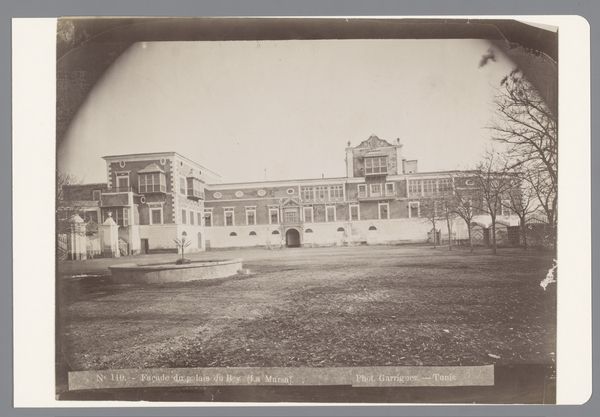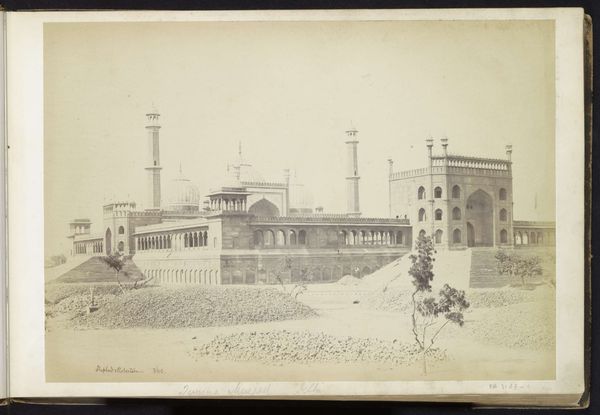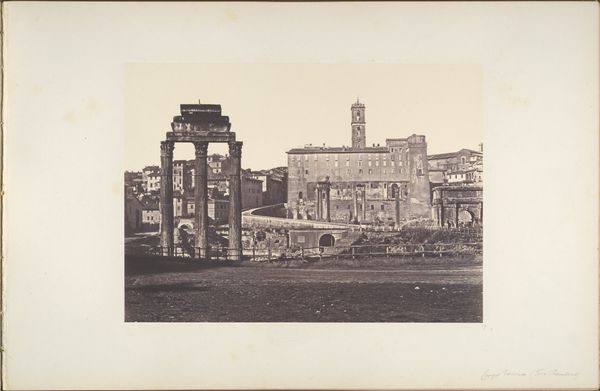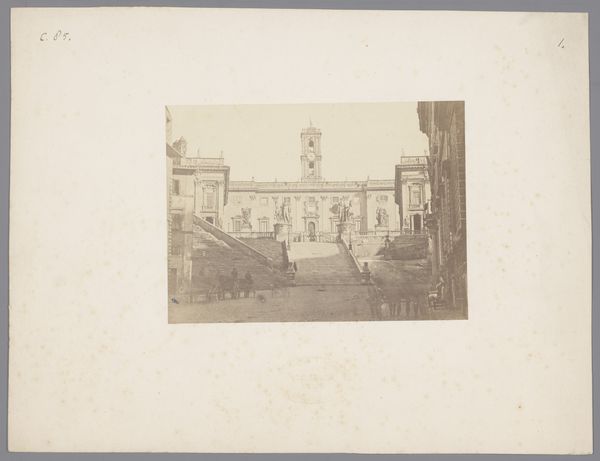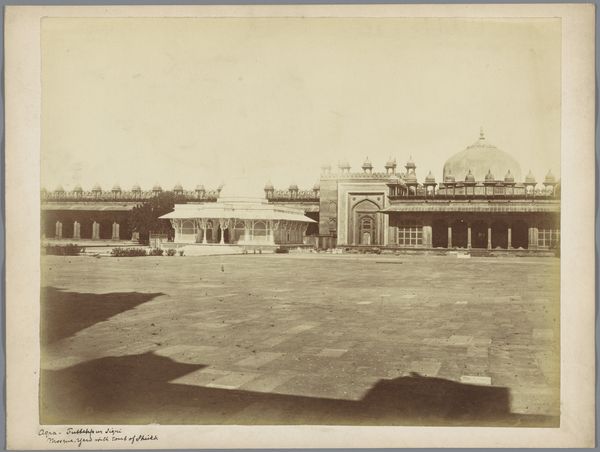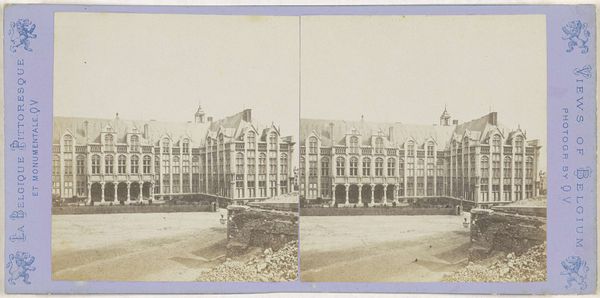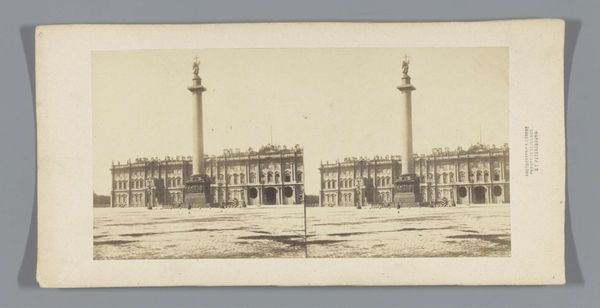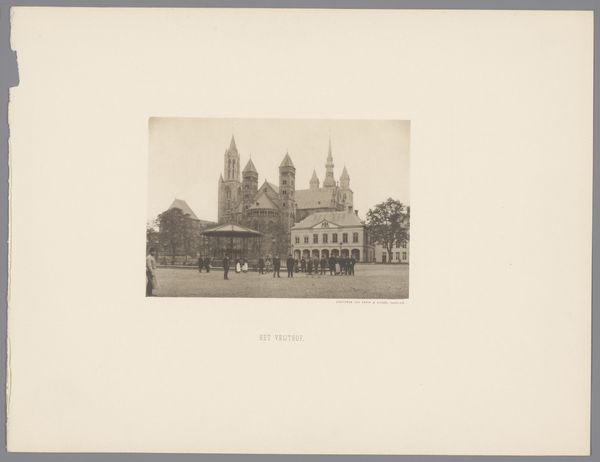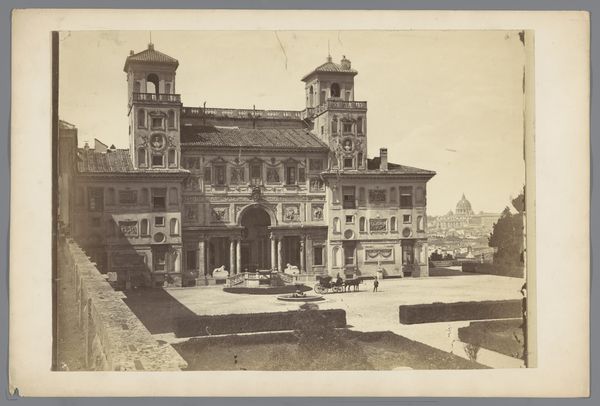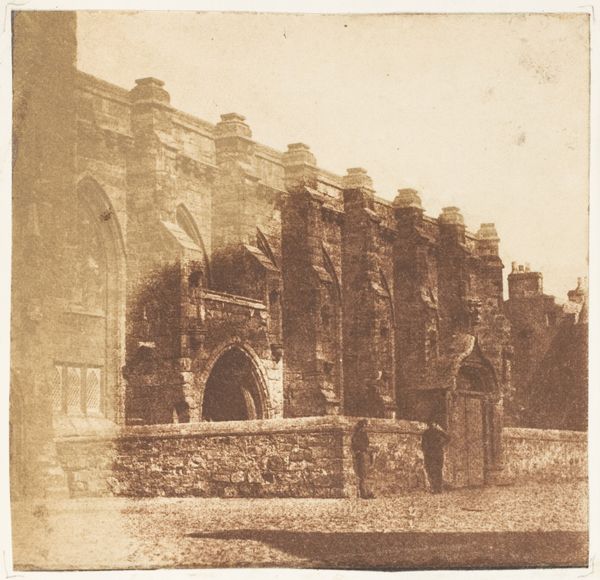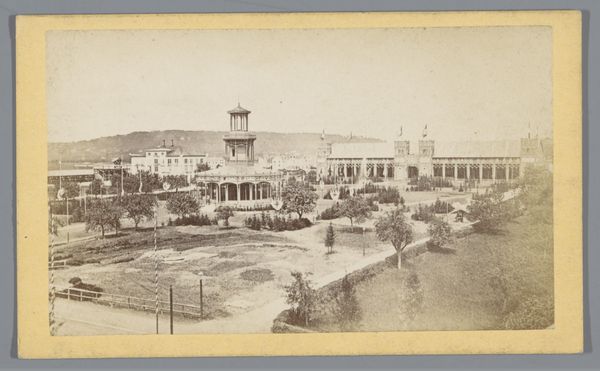
Gezicht op het paleis van Mohammed Said bij de haven van Alexandrië 1870 - 1890
0:00
0:00
photography, albumen-print
#
landscape
#
photography
#
orientalism
#
cityscape
#
islamic-art
#
albumen-print
Dimensions: height 316 mm, width 404 mm
Copyright: Rijks Museum: Open Domain
Curator: What strikes me first is the photograph's muted sepia tones, lending an almost melancholic air to the architectural subject. There’s a sense of grand isolation. Editor: Indeed. The image captures the palace of Mohammed Said near the port of Alexandria. Luigi Fiorillo made this albumen print somewhere between 1870 and 1890, a period when photography was actively shaping European perceptions of the Middle East. The stylistic influences of Orientalism are obvious. Curator: Absolutely. The stark, arid landscape evokes a feeling of timelessness and the structure itself suggests both power and perhaps, vulnerability against such a desolate backdrop. Note the wall. It makes one think of defense, separation, a barrier between power and the ordinary world. Editor: I see that barrier more as a representation of constructed identity. Photography at this time often romanticized and sometimes exoticized Eastern subjects. The photograph becomes an artifact of colonial gaze, a documentation intended for Western audiences to project their fantasies. Curator: I think that’s insightful. But consider also that photography presented an opportunity for greater exchange between cultures. The minarets themselves and their clear architectural link to Islamic Art showcase both power and also great historical and spiritual depth. This is further highlighted through being shown near a cityscape, suggesting both the traditional values but modern outlook. Editor: True, those dual towers suggest an enduring connection to religious custom. And the image as a whole offers some visual cues regarding Egyptian ambition during a pivotal phase. There’s a push and pull here that speaks to the socio-political tensions within the area at that point in time. It shows an area that had long-standing culture in architecture attempting to be modern. Curator: Yes, a truly dynamic intersection of imagery, one that reveals historical perspective and our present preconceptions. Editor: Absolutely; it remains a fascinating case study.
Comments
No comments
Be the first to comment and join the conversation on the ultimate creative platform.
